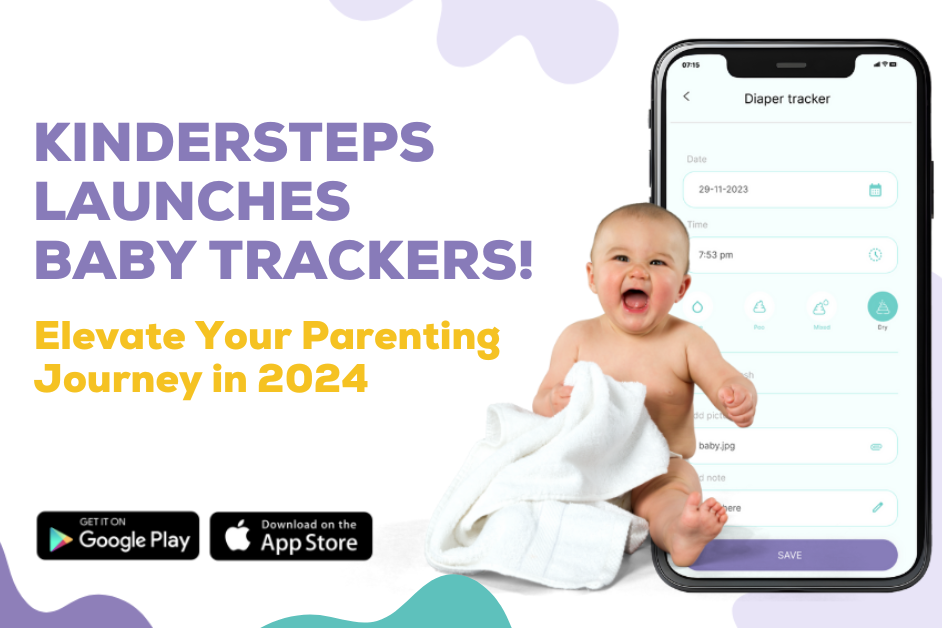Effective communication is one of the most essential life skills. From expressing oneself to navigating relationships, communication plays a critical role in all areas throughout life. Communication skills learned in developmental years pretty much set the tone for the years ahead. As a parent, you have an important part to play in building your child’s communication skills. Moreover, it is an opportunity to develop a strong connection with your children through meaningful interaction.
In this blog, you'll learn all about what you can do to help build your child’s communication skills.
Whether children are yet to start speaking or not, they are continuously communicating - through gestures, illegible words, crying, and so on. So, it is vital to understand what communication is made of before you can start applying the techniques to build communication. Communication is mainly of three types - verbal, non-verbal, and visual. Verbal communication relies on spoken words to interact and exchange information. Language is the key facilitator of this type of communication. On the other hand, non-verbal communication utilizes gestures, facial expressions, body language, posture, tone, and other cues to convey something. Similarly, visual communication makes use of visual aids to communicate a message. These include signs, colors, pictures, maps, and other visual cues. If you observe closely, you’ll realize our communication is more often than not an interplay of all three types.
The 6 Ways to support your child’s communication skills:
1. Respond to what they say or do: The first step to teaching a child about communication is by responding to their attempts at communication. When they put their arms on you, smile at you, cry, or babble, they are communicating. Responding to their gestures, sounds, or expressions lets them know what they are doing is important and effective. Making eye contact, talking to them, picking them up in response to their communication attempts will help them learn that communication is a two-way street.
2. Listen and talk to them: Talking and listening to and fro is crucial to motivating your child to communicate. Talk to them, give them time to respond, talk some more, and listen to what they have to say some more. Asking open-ended questions is a great way to build up conversations and encourage your child to share. “How do you feel while playing?” “Why do you like your favorite toy?” “What makes you laugh?” so on and so forth. Even if your child is yet to start speaking properly, you can ask questions or talk to them about things in simple words to help them develop conversation skills. However, make sure you don’t force them to answer. If they seem uninterested, you can try again later. The important thing is to find dedicated time to talk with them every day.
3. Understand how your child communicates: Whether a newborn or a 5-year-old, every child has a unique personality and preferences. Some prefer staying quiet. Some enjoy putting on a show. If you have more than one child, you’ll notice they have different communication preferences and styles. Getting to know how your child likes to communicate with you and others can help you establish a solid connection with them. Make sure to recognize and respect their preferences; you will become a safe space to share their thoughts and feelings without the fear of judgment and criticism.
4. Read together: Reading books together is an excellent way to teach language skills to children. During early childhood, you can use picture books to help them get familiar with colors, shapes, and other living and non-living things. As they grow older, you can help them learn more complex words through stories or reading materials. Moreover, reading and discussing stories will also help them boost their imagination. Reading together is also a fantastic activity to spend quality time with your child. Not to mention, inculcating a reading habit from childhood can be an activity they’ll benefit from and cherish lifelong.
5. Narrate what you’re doing: During the early years, another great way to teach your child verbal communication is by narrating your activities in front of them. For example, when you’re feeding them, you can say, “I’m picking veggies with the spoon.” “Here goes peas into your mouth.” “Do you like it?” Narrating things helps them connect words with actions and objects and thus develop their vocabulary. Moreover, as you speak, they’ll get encouraged to speak and respond.
6. Teach non-verbal communication: Non-verbal cues are an indispensable part of effective communication. Hence, teaching your child about them from early on is important. Not only will it help them build their non-verbal communication skills, but also comprehend others better and empathize. The best way to familiarize your child with non-verbal communication is through your own body language. Make eye contact, smile, bend to their level, use a reassuring tone of voice, touching your child’s arm to show interest when they approach you.
While you must emulate positive verbal cues, it is also necessary to help them understand the unpleasant cues. You can help them learn about these by discussing and giving examples of the same. The big takeaway is, communication is a key life skill vital to your child’s overall development. As a parent, not only can you help your children develop these skills to win at life, but also deepen your bond with them. Making use of the above-mentioned activities and techniques in the day-to-day interaction with your children will lay strong foundations of healthy communication in them.
Hope you find this article valuable. On the KinderSteps app, you will find more parenting tips and activities to support your child’s overall growth. Not to mention, you get to multiply the joy by sharing photos and videos of their milestones and achievements with your family and friends.






.jpg?alt=media&token=166b64a9-274c-400c-95e4-baf0013e7e43)
